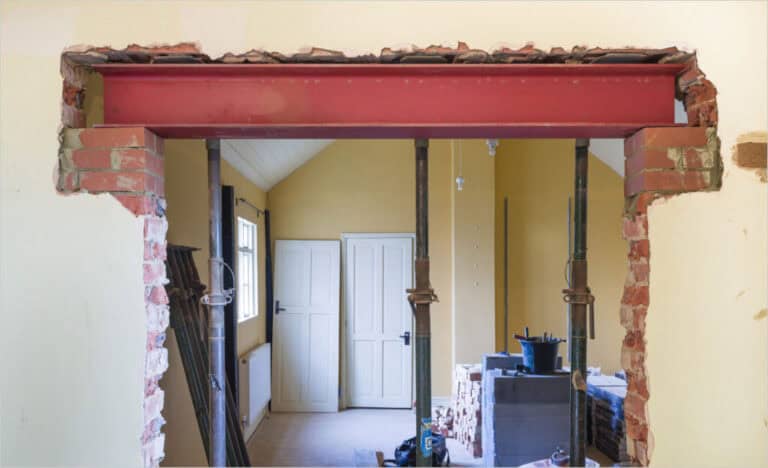Steel bridges have shaped modern infrastructure for over a century, connecting cities and enabling commerce. From the iconic truss bridges spanning vast rivers to the humble beam bridges in rural areas, each type serves a unique purpose. In this article, we’ll explore the pros and cons of three common steel bridge types—girders, beams, and trusses—to help you determine the best design for your next project.
Girder Bridge
What is a Girder Bridge?
A bridge girder spans between piers or abutments, supporting weight and ensuring stability. Made of steel or concrete, it efficiently distributes loads and withstands heavy traffic.
The main types are I-beams, box girders, and plate girders. I-beams have a simple design and strong load capacity. Box girders, with their hollow shape, resist twisting, making them ideal for curved and long-span bridges. Plate girders, welded or bolted from steel plates, offer custom solutions for longer spans.You’ve likely crossed a girder bridge without noticing—they’re common in highways, urban roads, and railways. Their modular design speeds up construction and reduces costs, making them a key part of modern infrastructure.
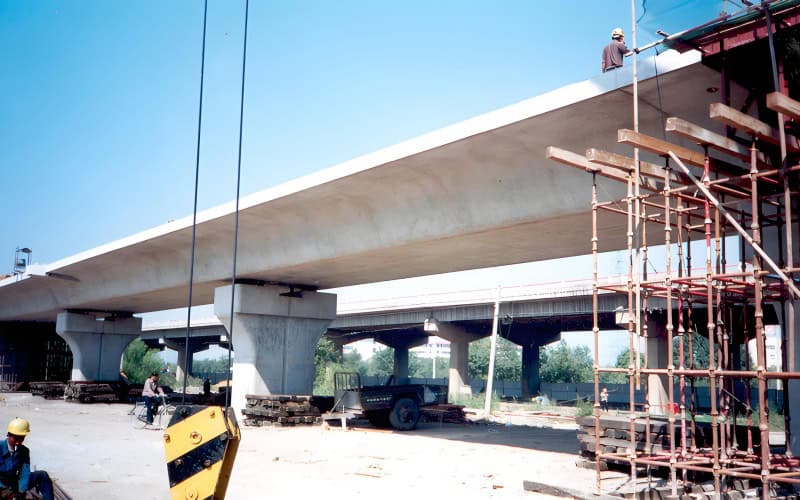
Pros of Girder Bridges
High Load-Bearing Capacity: Girder bridges support heavy traffic loads, making them ideal for highways, railways, and industrial zones. Their rigid structure distributes weight efficiently, preventing deformation and ensuring long-term durability under continuous use.
Simple Design and Fast Construction: The straightforward structure of girder bridges allows for efficient manufacturing and quick installation. Prefabricated components enable rapid on-site assembly, reducing labor and construction time. This makes them a practical choice for short to medium spans where speed and cost are priorities.
Cost-Effectiveness: For short to medium spans, girder bridges offer a cost-efficient solution due to optimized material use and simplified construction. Compared to suspension or truss bridges, they require fewer materials and less maintenance, lowering both initial and long-term costs.
Efficient Material Use: Girder bridges minimize material waste while maintaining structural integrity. Box girders, for example, eliminate excess material to reduce dead load without sacrificing strength. Their longer span capacity compared to T-beam bridges reduces the number of piers needed, further cutting construction costs.
Ease of Construction: For small to medium spans, girder bridges offer fast fabrication and installation. Their modular design simplifies transportation and assembly, making them ideal for time-sensitive projects while allowing easy structural adjustments.
High Torsional Stiffness: Steel box girders provide strong torsional resistance, essential for curved bridges and uneven loads. This enhances stability under high winds, seismic forces, and shifting traffic, ensuring safety and long-term performance in challenging environments.
Cons of Girder Bridges
- Limited Span Length – Girder bridges struggle with long spans without extra support. For wide crossings, combining girders with piers or using hybrid designs can improve performance.
- Aesthetic Limitations – Their straight, utilitarian look lacks the elegance of arch or suspension bridges. Incorporating architectural elements, decorative finishes, or custom girder shapes can enhance visual appeal.
- High Maintenance Requirements – Exposure to humidity and pollutants accelerates corrosion. Using weather-resistant coatings, galvanization, or stainless steel reduces maintenance needs and extends lifespan.
- Heavy Self-Weight – Girders contribute 30% to 60% of total load, increasing material use and foundation demands. Optimizing steel grades, using lighter composite materials, or refining design geometry can mitigate excess weight.
- Demanding Foundation Requirements – High loads require strong foundations, especially on weak soils. Pile foundations, deep footings, or soil stabilization techniques improve stability and prevent settlement.
The following are the advantages, disadvantages, and meanings of Beam Bridge under the Girder Bridge classification.
Beam Bridge
What is a Beam Bridge?
A beam bridge is the simplest type of girder bridge, made of a horizontal beam supported by piers at both ends. It handles weight through bending and shear forces, making it a go-to choice for short spans like pedestrian bridges, rural roads, and small river crossings.Compared to plate or box girders, beam bridges are lighter, easier to build, and more cost-effective. They’re often made of steel, concrete, or wood, depending on the project. While they’re great for quick, practical solutions, they can’t go very far without extra support—so for longer spans, you’ll need a different approach.
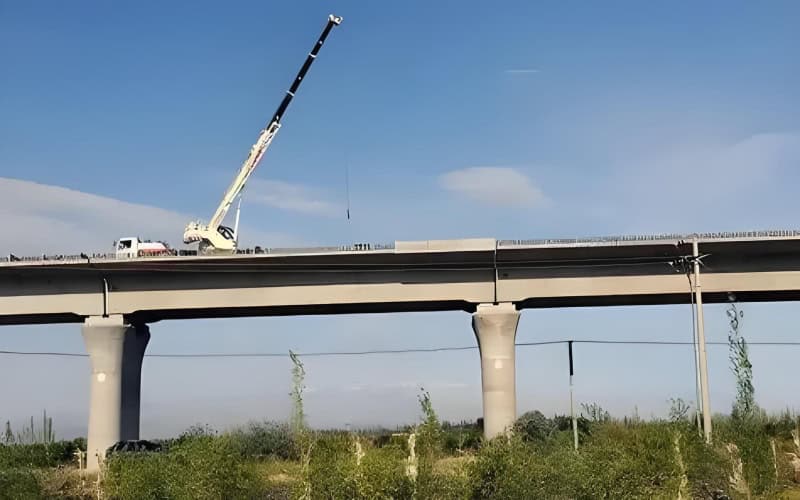
Beam Bridge Pros and Cons
Pros of a Beam Bridge
- Simple and Cost-Effective: Beam bridges have a straightforward structure, making them affordable and easy to build. With fewer materials and minimal labor, they are ideal for rural roads and small river crossings. Their low technical requirements mean even local builders can construct them, keeping costs down.
- Ideal for Short Spans: Designed for short-distance crossings, beam bridges work well for pedestrian walkways, small rivers, and local roads. Their efficient load distribution makes them a practical and reliable choice for low to moderate traffic conditions.
- Easy Component Replacement: Damaged beams can be replaced individually, avoiding costly full-scale reconstruction. If a beam is hit by a vehicle, it can be removed and replaced with a precast unit, reducing downtime and extending the bridge’s lifespan.
Beam Bridge Disadvantages
- Limited Span Capacity – Beam bridges are best for short distances. Longer spans require more piers, which can increase costs and disrupt waterways or traffic below.
- Vulnerable to Bending – Over time, heavy or uneven loads can cause sagging. Reinforcements like prestressed concrete or steel tensioning help improve strength and durability.
- Vertical Clearance Constraints – The beam depth affects clearance beneath the bridge. In areas where high clearance is needed for ships or trains, other bridge types may be a better fit.
- Construction Challenges – Poor quality control can lead to cracks along steel reinforcements or surface defects in concrete. Precision in tensioning and material placement is key to ensuring long-term performance.
- Difficult to Modify or Expand – Unlike modular bridge designs, beam bridges are harder to widen or reinforce. Major changes often require additional supports or structural overhauls, making expansion complex and costly.
Truss Bridge
What is a Truss Bridge?
A truss bridge is a structure that uses interconnected triangles to distribute weight evenly and enhance stability. This design allows it to span long distances while supporting heavy loads with minimal material.
Truss bridges are commonly used for railways, highways, and river crossings due to their strength and efficiency. Popular types include the Warren, Pratt, and Howe trusses, each optimized for different load conditions. Their lightweight yet durable framework makes them a cost-effective choice for modern infrastructure.Unlike girder bridges, which rely on solid beams to bear loads, truss bridges use an open framework, reducing overall weight while maintaining high strength.
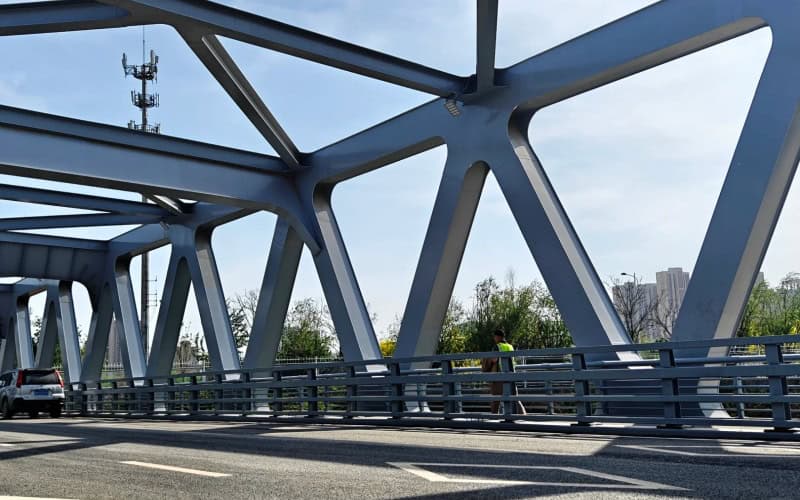
Advantages of a Truss Bridge
- High Strength-to-Weight Ratio – Truss bridges support heavy loads with less material, thanks to their efficient weight distribution. This makes them ideal for railways, highways, and industrial applications.
- Long-Span Capability – Unlike beam or girder bridges, truss bridges can span greater distances without excessive support piers, making them perfect for wide rivers, deep valleys, and rugged terrain.
- Efficient Material Use & Cost Savings – Since truss bridges mainly handle axial forces (tension or compression), they use materials more efficiently than girder bridges. A mid-span truss bridge can reduce material costs by 20%-30%, making it a budget-friendly solution for large projects.
- Fast and Easy Construction – Prefabricated truss components allow for quick on-site assembly, cutting down labor and project time. This is especially useful for disaster recovery, where truss bridges can be rapidly installed to restore transportation routes. Factory precision also ensures better quality and lower maintenance costs.
- Aesthetic Appeal – Many truss bridges, like the Brooklyn Bridge, are architectural icons. Their geometric design makes them both functional and visually striking, ideal for historic, scenic, or urban areas.
- Optimized for High-Strength Steel – Truss bridges maximize the benefits of high-strength steel, reducing weight while increasing durability. This enhances structural efficiency and helps lower overall construction costs.
Truss Bridge Disadvantages
- Complex Construction & Skilled Labor – Truss bridges require precise engineering and specialized assembly, making them more difficult and time-consuming to build than simpler bridge types. Skilled labor is essential for welding, riveting, or bolting critical joints.
- Higher Initial Costs – The extensive use of steel, complex fabrication process, and reinforced joints increase material and construction costs. Additional foundation work and corrosion protection add to the overall expense.
- High Maintenance Needs – With numerous interconnected components, regular inspections and upkeep are necessary to check for corrosion, fatigue cracks, and loose fasteners. In high-traffic areas, frequent maintenance is required to ensure long-term stability.
- Vulnerable Joint Connections – Truss joints handle high stress and must be carefully constructed. Poor welding or loose bolts can lead to cracks and deformations, compromising structural integrity and requiring costly repairs.
- Fatigue Issues in High-Traffic Areas – Constant vehicle loads can cause fatigue damage, especially in high-stress zones like joints and diagonal members. Over time, small cracks may expand, requiring reinforcements or retrofits to maintain safety.
- Fixed Truss Spacing Limits Modifications – The rigid truss framework leaves little room for lane adjustments or expansions. Unlike girder bridges, modifications often require significant structural changes, increasing costs and construction time.
Comparative Analysis of Steel Bridge Pros and Cons
Choosing the right steel bridge comes down to a few key factors—span length, load capacity, cost, aesthetics, and maintenance. Each type has its strengths, making them better suited for different projects.
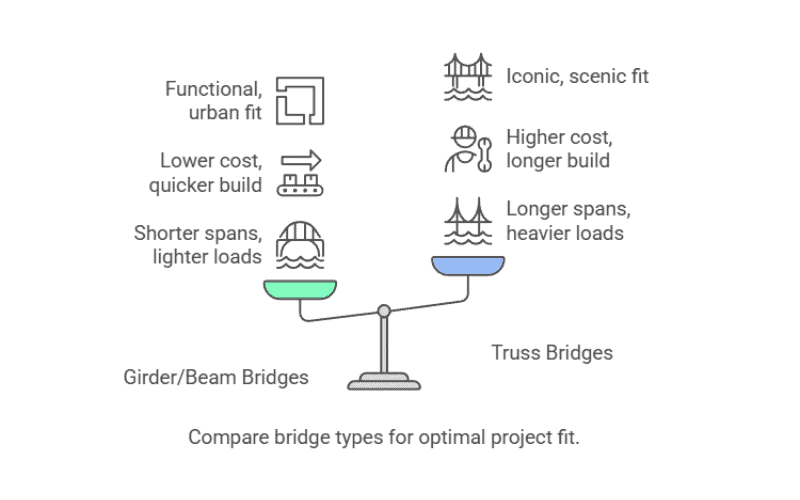
Span Length and Load Capacity
- Girder Bridges – Best for short to medium spans with high load demands, making them a go-to for highways, overpasses, and industrial sites. Their sturdy design supports heavy traffic and equipment without excessive materials.
- Beam Bridges – Ideal for short spans and lighter loads, like pedestrian walkways, rural roads, and small river crossings. Their simple structure allows for fast, cost-effective construction.
- Truss Bridges – Built for long spans and heavy loads, commonly used for railways, deep valleys, and major waterways. Their smart triangular design spreads weight evenly, reducing stress and increasing stability.
Cost and Construction Time
- Girder and Beam Bridges – More affordable and quicker to build, thanks to their straightforward design and prefabricated components. This makes them practical for tight budgets and fast-track projects.
- Truss Bridges – Come with a higher price tag and longer build times, due to their complex structure and precise engineering. But for projects needing strength and longevity, the investment often pays off.
Aesthetic and Environmental Considerations
- Girder and Beam Bridges – Functional and no-nonsense, but not the most eye-catching. They work well in urban and industrial areas where practicality is the priority.
- Truss Bridges – Known for their iconic look, seen in historic landmarks and scenic routes. Their geometric patterns add character, making them a great fit for visually striking projects.
Maintenance and Durability
- Girder and Beam Bridges – Need regular upkeep, especially in coastal or extreme weather conditions, where steel can corrode over time. Protective coatings and routine inspections help extend their lifespan.
- Truss Bridges – With more parts and connections, there are more points to inspect and maintain, but their durability and load efficiency make the effort worthwhile, especially for high-traffic or long-term projects.
Steel bridges are built for durability, but corrosion, fatigue, and environmental factors affect their lifespan. Regular maintenance, like protective coatings and reinforcements, ensures long-term performance. Despite these challenges, steel’s strength and adaptability make it the top choice for bridges. Learn more in Is steel good for building bridges?
Applications of Girder, Beam, and Truss Bridges
Each bridge type has its niche, and understanding their applications can help you make informed decisions.
| Bridge Type | Applications |
| Girder Bridges | Highway Overpasses – Handles heavy traffic with strength and durability. |
| Urban Roadways – Common in city infrastructure for cost-effectiveness. | |
| Industrial Access Bridges – Used in factories and ports for heavy loads. | |
| Airport Runway Bridges – Supports aircraft loads on taxiways. | |
| Floodplain Crossings – Provides stability in areas prone to flooding. | |
| Beam Bridges | Pedestrian Bridges – Lightweight and ideal for parks and city walkways. |
| Small River Crossings – Cost-effective for rural areas. | |
| Temporary Bridges – Quick assembly for disaster relief or military use. | |
| Overpasses for Railways – Safe road crossings over railway tracks. | |
| Agricultural Bridges – Used on farms to connect fields and transport. | |
| Truss Bridges | Railway Crossings – Ideal for long spans and heavy freight loads. |
| Landmark Bridges – Architectural choice for aesthetics and engineering. | |
| Large River and Canyon Crossings – Covers long, unsupported spans. | |
| Military and Emergency Bridges – Strong and modular for rapid deployment. | |
| Coastal and High-Wind Areas – Built to withstand harsh weather. |
Let’s take a look at our expert’s comparison of these three types of bridges:
- Material Efficiency – Truss bridges use less steel than girder or beam bridges for long spans. Their triangular design minimizes bending stress, making them lighter yet stronger.
- Cost vs. Performance – Beam and girder bridges are cheaper upfront, but truss bridges last longer and require less frequent major repairs. For heavy loads and long spans, investing in a truss bridge can save money over time.
- Adaptability for Future Expansion – Girder bridges allow deck widening with minimal changes, making them ideal for growing urban areas. Truss bridges, however, need extensive modifications if expanded.
- Site-Specific Suitability – Truss bridges handle high winds and seismic activity better due to their lighter weight and even load distribution. In coastal or earthquake-prone areas, they offer better stability than heavy girder structures.
The best bridge isn’t just the cheapest—it’s the one that meets load demands, adapts to future needs, and performs efficiently for decades.
Conclusion
Steel bridges, whether girders, beams, or trusses, each have their strengths and weaknesses. Girder bridges excel in cost-effectiveness and simplicity, beam bridges are perfect for short spans, and truss bridges shine in long-span and high-load applications. When selecting a bridge type, consider factors like span length, budget, and aesthetic requirements.
Looking ahead, advancements in materials and construction techniques are pushing the boundaries of steel bridge design. From sustainable materials to smart monitoring systems, the future of steel bridges is as exciting as their storied past.
In urban infrastructure, steel bridges play a key role in transportation networks, much like steel structure flyovers and corridors, which serve different purposes but share fundamental design principles. Learn more about their differences in The difference between steel structure flyover and steel structure corridor.If you’re planning a steel bridge project and need expert guidance, explore our steel bridge project portfolio to see how we’ve successfully delivered innovative and durable solutions for a variety of applications.

